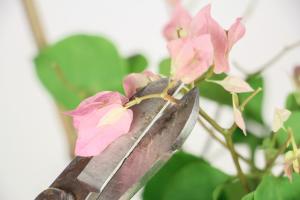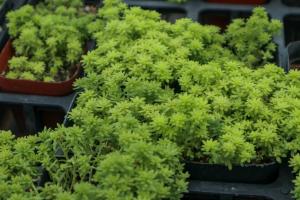How to Boost a Heirloom Tomato Plant
Heirloom tomato plants are prized possessions by gardeners and foodies alike. With their vibrant colors, complex flavors, and savory aromas, these tomatoes are a rare treat that cannot be replicated by regular tomatoes. However, growing heirloom tomatoes can be a bit challenging, especially for beginner gardeners. In this article, we will provide some tips on how to boost a heirloom tomato plant to produce the best crop possible.
Start with the Right Soil
Heirloom tomato plants require deep, rich soil that is well-drained, with a pH level between 6.0 and 6.8. Before planting your tomato seeds or seedlings, amend your soil with organic matter such as compost, aged manure or shredded leaves to help retain moisture and nutrients. Keep in mind that tomatoes are heavy feeders, so it is important to fertilize regularly using a balanced tomato-specific fertilizer or compost tea. Be wary of over-fertilization, as this can result in excessive green growth at the expense of blossoms and fruit.
Provide Proper Support
Heirloom tomato plants can grow quite tall and heavy. Therefore, it is essential to provide proper support to prevent them from falling over and breaking. You can use stakes, cages, or trellises to support your plants throughout their growth. Staking involves inserting a wooden or metal stake next to the plant and tying it up with twine or string. Cages are made of wire or plastic and are placed around the plant to support it. Trellises consist of a wire or bamboo grid system that allows the plant to grow upward in a controlled manner.
Prune Strategically
Heirloom tomato plants can be prolific growers, producing an abundance of branches, leaves, and suckers throughout the growing season. While it may seem counterintuitive, pruning your plant can actually help it produce more fruit. By removing extraneous branches and suckers, you allow the plant to focus its energy on producing fruit. Additionally, pruning can help increase airflow around the plant, reducing the likelihood of diseases such as powdery mildew or early blight. Be sure to use clean, sharp pruning shears and make clean cuts to avoid damaging the plant.
Water Consistently
It is vital to water your heirloom tomato plants consistently throughout the growing season, especially during periods of hot weather. Keep the soil moist but not waterlogged, as this can cause root rot. Water deeply and infrequently, rather than giving your plants a quick shower every day. The frequency of watering will depend on various factors such as soil type, climate, and plant size, so make sure to pay attention to your plants' needs.
Protect from Pests and Diseases
Unfortunately, heirloom tomato plants are susceptible to a variety of pests and diseases, including aphids, whiteflies, blossom end rot, and fungal diseases. To protect your plants from these threats, consider using organic pest control methods such as neem oil, insecticidal soap, or beneficial insects such as ladybugs or lacewings. Additionally, be sure to practice crop rotation, avoid overwatering, and remove any infected or diseased plant material immediately to prevent the spread of disease.
Conclusion
Growing heirloom tomato plants can be a rewarding experience, but it requires attention and care. By providing your plants with the right soil, support, pruning, watering, and protection, you can boost their growth and produce a bountiful crop of delicious, flavorful tomatoes. Remember, heirloom tomatoes are delicate and unique, and the effort you put into growing them will be rewarded with a truly exceptional culinary experience.

 how many times do yo...
how many times do yo... how many planted tre...
how many planted tre... how many pine trees ...
how many pine trees ... how many pecan trees...
how many pecan trees... how many plants comp...
how many plants comp... how many plants can ...
how many plants can ... how many plants and ...
how many plants and ... how many pepper plan...
how many pepper plan...





























